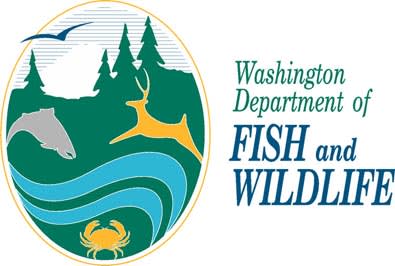From Bears to Disease, Backyard Bird Feeders can Mean Trouble for Washington Residents
OutdoorHub 11.10.11

Backyard bird feeders may provide great window-view entertainment during the cold fall and winter months, but they can mean trouble, from raiding bears to the spread of bird diseases.
Black bears have become notorious raiders of backyard bird feeding stations in Washington, especially where both people and bears are most dense. Black bears are abundant in forested habitat, so the suburban and even urban areas of the north Puget Sound and Olympic Peninsula regions of the state have the most chronic problems.
Washington Department of Fish and Wildlife (WDFW) officials explain that hungry bears are looking for easy meals to fatten up before they go into winter dens. When a bear becomes conditioned to food near humans, whether from a bird feeder or a garbage can, it can be dangerous. WDFW enforcement officers attempt to capture and relocate bears, but too often there’s nowhere to safely release a conditioned, problem animal and they are sometimes euthanized.
Black bears usually go into winter dens by November, but that can vary depending on weather conditions. Availability of food can also be a trigger for winter denning, so it’s possible that feeders and unsecured garbage cans could change bears’ natural behavior.
“Backyard bird feeding can be recreational, even educational, for us,” said WDFW wildlife biologist Christopher Anderson, “but it isn’t critical for wintering birds. They can and do find natural sources of food throughout the winter, especially if you’ve landscaped your property with shrubs and trees that produce seeds, nuts or fruits. But if you really want to feed birds to be able to watch them more easily, and if bears are a potential problem in your area, hold off putting the feeders up until Thanksgiving or after.”
Backyard feeders can also concentrate birds so they attract both wild and domestic predators. Depending on feeder placement and available escape cover, birds can become more vulnerable to ambushes by hawks or cats.
But even more troublesome than bears or cats, however, can be the spread of bird diseases at backyard feeding stations that are not meticulously maintained.
The most common is salmonellosis, a usually fatal bird disease caused by the salmonella bacteria that is transmitted through bird droppings at feeders. The disease afflicts species such as finches, grosbeaks and pine siskins that flock together in large numbers at feeders.
The first indication of the disease is often a seemingly tame bird on or near a feeder. The birds become very lethargic, fluff out their feathers, and are easy to approach, but there is very little that can be done to treat them.
It’s possible, although uncommon, for people to become sick from the salmonella bacteria through direct contact with infected birds, bird droppings, or through pet cats that catch sick birds. People who handle birds, bird feeders or bird baths should wear gloves and wash their hands thoroughly afterwards.
In Washington, other bird diseases that may be seen at backyard feeding stations include avian pox — a viral disease that causes wartlike growths on unfeathered parts of birds’ faces, legs, and feet; aspergillosis — a disease caused by a fungal mold that grows on damp feed or soil in or around the feeder; and trichomoniasis — a disease caused by small parasites that is mostly found in doves and pigeons and may often spread to local birds of prey when they eat infected birds.
When disease is noted or suspected in local birds, feeders should be taken down for two to three weeks or more to reduce concentration of sick birds at feeders and curb spread of the illness. Clean feeders with a ten percent bleach solution (one part bleach to nine parts warm water). Soak feeders and all parts for at least 10 minutes. Scrub, thoroughly rinse, and dry completely before re-using. This should be repeated every couple of weeks as regular feeder maintenance.
Avoid using wood feeders because they’re difficult to keep clean. Metal, glass or plastic tube feeders, that don’t have flat surfaces where droppings, fungus or other dirt can collect and spread disease, are better. Make sure any feeders used allow rain and melting snow to drain easily. Finally, keep areas under feeders clean of excess spilled seed to deter rats and other pests, and to minimize fungal growth.
For more information about winter backyard bird feeding, see http://wdfw.wa.gov/living/winter_feeding/index.html
For more information about black bears, see http://wdfw.wa.gov/living/bears.html

